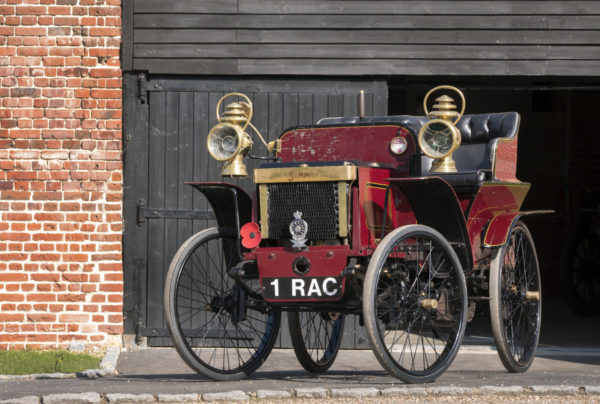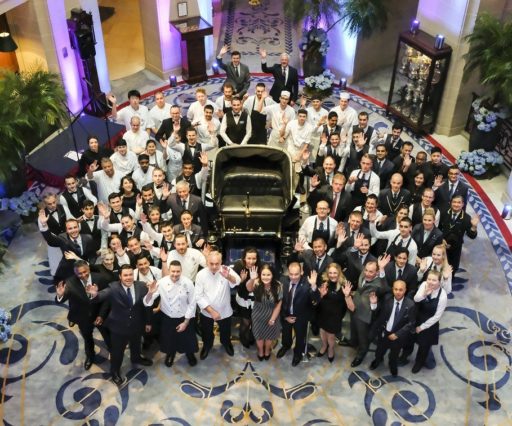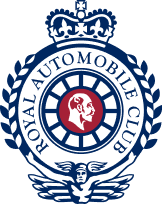Motoring Timeline

The Automobile Club of Great Britain (and later Ireland) was formed in 1897 when motoring was in its infancy. ‘Horseless carriages’ were regarded then with much scepticism and suspicion. From the outset, events such as races, hill climbs, and ‘reliability’ trials that raised the public profile of automobilism were encouraged. Within a few short years, the ACGBI established itself as the governing body of motoring and motorsport in this country. This timeline tabulates some landmark events organised by the ACGBI, later the Royal Automobile Club, over succeeding decades.
1896 – The restrictive ‘Red Flag’ Act, which had required a man to walk in front of every vehicle, was repealed, signalling the birth of motoring in the United Kingdom.
1896 (14 November) – The Emancipation Run, the precursor to the London to Brighton Veteran Car Run, was organised to celebrate the passing of the Locomotives on Highways Act. Thirty-three pioneering motorists celebrated the new motoring freedoms.
1897 (8 December) – Formal inauguration of the Automobile Club of Great Britain (and later Ireland) took place. Membership then comprised 163 Full Members.
1900 – ACGBI Secretary Claude Johnson organised the 1,000 Miles Trial, putting motoring manufacture in this country firmly on the map. Eighty-four motor cars travelled the length and breadth of the country in a reliability trial in order to show to the general public what a horseless carriage was capable of doing.
1903 – The Motor Car Act passed into law. The Club had vigorously campaigned for this legislation, having espoused the interest of the private motorist since its inception. This Act increased speed limits and removed other restrictive legislation.
– The Club petitioned councils in Southern Ireland to obtain the necessary legal authority to hold the Gordon Bennett race (just outside Dublin). This event effectively marked the beginning of road racing in the British Isles.
1905 – The Club organised the first Tourist Trophy race, the oldest motor car race in the world to be continuously run. Today it forms part of the World Endurance Championship.
– The Club introduced driving certificates, responsibility for which would not be taken up by the government for another 30 years or so.
1907 – The Automobile Club of Great Britain and Ireland was commanded henceforth by His Majesty King Edward VII to be known as the Royal Automobile Club.
– The Club inaugurated the Isle of Man TT race for motorcycles.
1908 – Associate membership of the Club was established, a principal feature of which was the ‘Get-You-Home’ service (1912) for broken-down vehicles. Club Guides, on bicycles initially, then motorcycles and vans, were introduced in the following years.
1926 – The Club staged the first ever British Grand Prix at the Brooklands circuit.
1930 – Introduced in 1927, this year marked the overall organisation by the Club of the London to Brighton Run.
1932 – The first RAC Rally of Great Britain took place with 341 competitors starting from nine different towns and cities; the finishing point was Torquay in Devon.
1948 – Silverstone, a disused airfield in Northamptonshire, was employed by the Club for the first post-war British Grand Prix.
1950 – The Club put on the first Grand Prix d’Europe at Silverstone, the race that marked the beginning of the ‘modern era’ of grand prix racing under FIA regulations.
1978 – The RAC Motor Sports Association was formed to control the business affairs of motorsport (that had evolved from the Club’s Competition Committee). Today it is recognised as the governing body for all four-wheeled motorsport in the UK. [It was rebranded Motorsport UK in 2018.
1991 – The RAC Foundation, a registered charity, was formed. Long before this body came into being, the Club’s Public Policy Committee, had been a respected voice in the formulation of government policy for roads and motor transport. Today, the Foundation continues to be a strong and independent source of academic research and influence.
1999 – RAC Motoring Services Ltd, which offers roadside services and many other benefits to millions of Associate members, was sold by the Royal Automobile Club to the Lex Group. This ‘demerger’ facilitated company access to capital markets for long-term growth.
2006 – The Woodcote Trophy, for post-war, pre-1955 racing sports cars, is founded – the first new motoring trophy for to be created by the Club for decades.
2011 – The Club organises its first Regent Street London Motor Show, which has now become the biggest, non-paying annual exhibition of motor cars in the country.
2016 – The Motor House on the Woodcote Park estate is opened, housing the Club’s Heritage Fleet of motor vehicles.
2018 – The Royal Automobile Club launches its prestigious Historic Awards for motor sport, motoring journalism and collections, now held annually.


